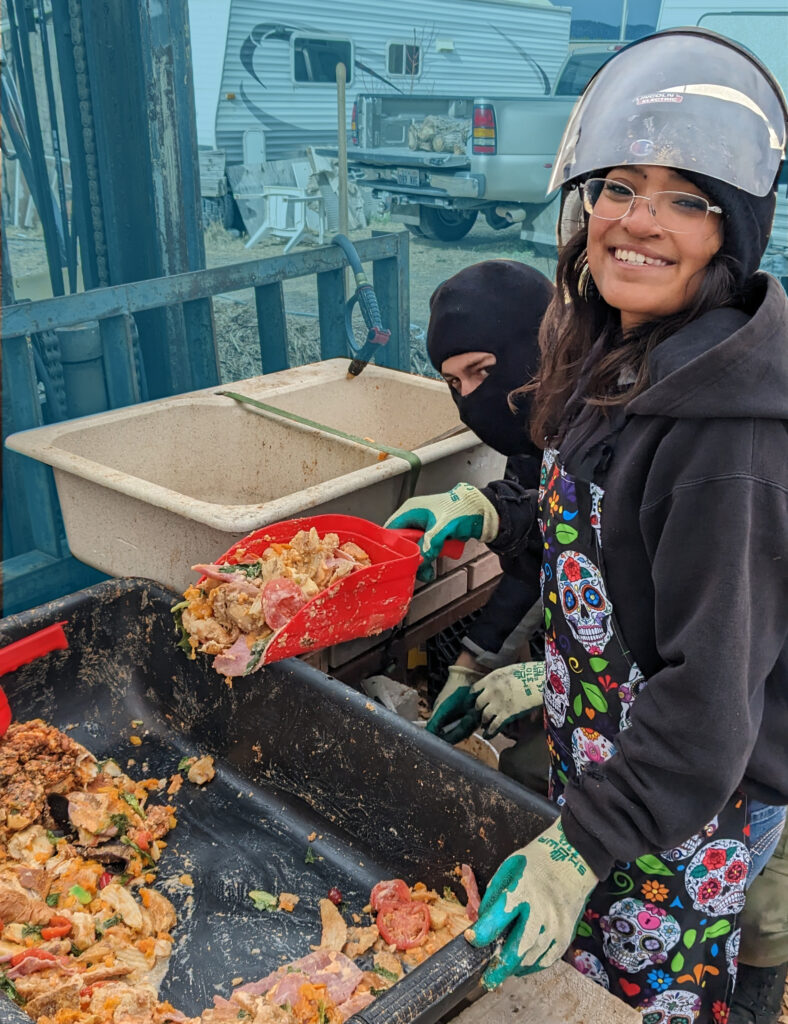A Climate Solutions Project
The New Earth Project is a community program based in Santa Clara, New Mexico, that focuses on:
- Food security
- Soil improvement
- Carbon sequestration
- Food waste reduction
- Education
- Youth employment
We are addressing pressing environmental issues with not just a call for sustainability-based solutions, but rather for regenerative and restorative practices, improving and revitalizing agricultural soils and natural landscapes. Our project employs the youth of our area, giving them new skills and knowledge for them to be strong leaders in the workforce.
Project Outline:
- We collect food surplus from school cafeterias and combine it with woody biomass, agricultural byproducts, and biochar, in the Johnson-Su compost bioreactors.
- We are constructing dozens of Johnson-Su bioreactors at Gila WoodNet in Santa Clara. These are static composting systems that produce a fungally dominant compost that restores soil with living microorganisms.
- We host Climathons for 4th and 5th grade students. During these half-day Climathons, students learn about climate change, environmental sustainability, build boxes for vermicomposting in their classrooms, and make posters and videos promoting the benefits of composting.
- We conduct monthly activities with students from participating schools to demonstrate the impacts of soil regenerative processes, including vermiculture, how compost and biochar affect seed growth, and the importance of native plants to this region.
- We host a monthly radio show on our community radio station, KURU 89.1 FM. Our show, New Earth Kids, features students of all ages who talk about the challenges facing our planet today and how they are creating and implementing solutions.
- We employ young people and provide jobs that increase their skills and understanding of our changing environment.
- We have strong support from the Gila National Forest Supervisor, Grant County Commissioners, and Town of Silver City Council members.

Innovation
The New Earth Project is an innovative pilot project. The Johnson-Su bioreactors were developed for use in rural settings using manure as the nitrogen source and straw, tree branches, leaves and other brown material as the carbon source. We are experimenting using food leftovers from school cafeterias as the nitrogen source and shredded woody liability biomass from forest thinning projects as the carbon.
In order to obtain similar size food particles, we put the food leftovers through a garbage disposal.
This food slurry, as we call it, is mixed with the shredded wood and biochar.
Results
After only three months of experimenting with the amount and type of biomass and biochar, we’ve found that the approximate proportion gives optimal results: 65% biomass, 25% food slurry, and 10% biochar. These proportions allow the bioreactor to reach thermophilic temperatures between 131-155 degrees Fahrenheit and remain at those temperatures for about one week.
Next Steps
Now that we feel confident that we have the correct proportions or ‘recipe’, we plan to experiment using other waste streams such as salt cedar, cardboard, and compostable plastics.



